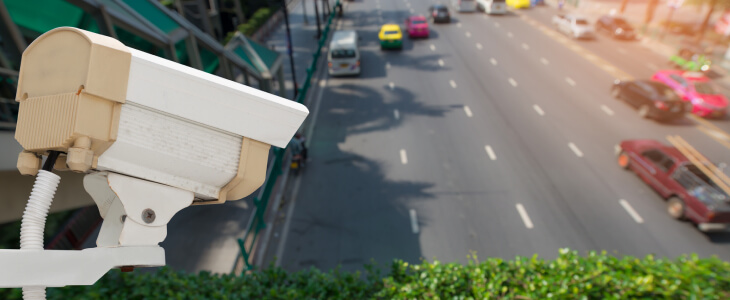As technology continues its rapid expansion, more and more things have become automated. One such thing is traffic enforcement systems. Traffic enforcement systems, which include red-light cameras and speed cameras have been used to improve road safety and reduce the number of traffic violations. But while they are responsible for good, they also raise serious legal questions for drivers in New York and across the U.S.
Right-light cameras are placed at busy intersections in order to take images of vehicles that run red lights. Speeding cameras leverage complex technology to detect when a vehicle is going faster than the posted speed limit.
Good Intentions
The purpose of these automated systems is to reduce traffic accidents, deter drivers from behaving recklessly, prevent injuries, and save lives. Although these automated traffic enforcement systems come with the best of intentions, many people have raised both legal and ethical questions about their use, including privacy concerns, due process, and accuracy issues.
Privacy Concerns
Automated traffic enforcement entails the capture of vehicle images, which may raise concerns about the privacy of individuals inside the vehicles. This raises questions about the secure handling and storage of these images and the potential risks of misuse or breaches.
Due Process
Motorists who receive automated traffic citations might claim that they are deprived of the chance to confront their accuser in a court of law, a fundamental element of due process. Instead, they are issued citations via mail, a process that some argue lacks transparency and accountability.
Accuracy and Calibration
The accuracy of these automated enforcement systems has also been questioned. With multiple factors, including maintenance, calibration, and even the possibility of technical glitches, it begs the question as to whether these citations could be given in error.
Navigating the Legal Implications
It’s extremely important that all New York drivers understand the legal implications of automated traffic enforcement. These systems are, in fact, intended to improve road safety, but this doesn’t negate the fact that they must also follow the law and respect drivers’ rights.
- Understand Your Rights – It’s crucial that you understand all of your legal rights – including those related to automated traffic citations. Once you understand the process and your options, you can take action.
- Consult with a Traffic Ticket Attorney – If you have received an automated traffic citation but believe that your rights have been violated and that it is inaccurate, it’s in your best interest to consult with a knowledgeable and experienced New York traffic ticket attorney. He or she can examine your case and provide the best guidance accordingly.
- Stay Informed – Always be sure that you stay up-to-date on any changes regarding automated New York traffic enforcement laws and regulations. You can’t protect your rights if you don’t have the full picture.
It’s apparent that finding a balance between road safety and individual rights is key. You can ensure that your rights are protected throughout the whole process with the help of a lawyer.
AutoTrafficTickets.com Helps Those in New York Who Have Been Issued an Automated Traffic Ticket
If you have received an automated traffic ticket in New York, it can have very serious consequences on your life and your livelihood. That’s why it’s in your best interest to consult with a knowledgeable and experienced New York traffic ticket attorney. A knowledgeable and experienced traffic ticket attorney understands the pertinent laws and can help you establish the best argument. AutoTrafficTickets.com can help. To learn more or to schedule a consultation, contact us today!
Posted in: Speeding Tickets, Traffic Tickets

